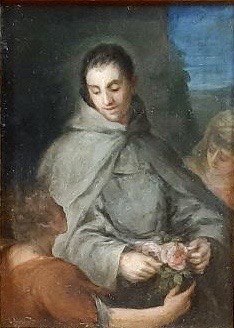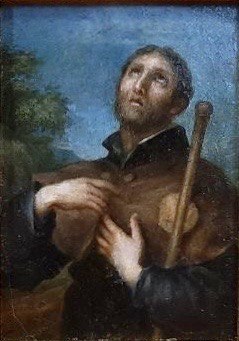Gregorio Ferro facts for kids
Gregorio Ferro Requeijo (born 1742 in Boqueixón, died 1812 in Madrid) was a talented Spanish painter. He also became a director at an important art school.
Contents
Early Life and Art Training
When Gregorio Ferro was fifteen years old, he moved from his home region of Galicia to Madrid. There, he joined the Real Academia de Bellas Artes de San Fernando. This was a famous art academy. He studied under a well-known artist named Anton Raphael Mengs.
In 1772, Gregorio Ferro entered a big art competition. He won second place. His painting showed the birth of Prince Carlos Clemente. This prince was the first son of King Charles IV. The painting was an allegory, which means it used symbols to tell a story.
Studying in Rome
After the competition, Gregorio Ferro traveled to Rome, Italy. He went there to continue his art education. The Academia helped pay for his trip. His teacher, Mengs, also gave him money. In Rome, Gregorio Ferro won several art medals.
Even before going to Rome, he had already drawn some pictures for the Royal Court. In 1781, he was chosen to be a member of the Academia. This was because of his painting showing the martyrdom of Saint Sebastian.
Leading the Academia
Gregorio Ferro became a leader at the Academia. In 1788, he was made Lieutenant-Director. This was a step up in leadership. Then, in 1791, he became the Director of Painting. This happened after another famous artist, Francisco de Goya, left the role.
In 1804, King Charles IV approved Gregorio Ferro to become the main Director of the Academia. Even with all these important roles, he was never named a "court painter." This might have been because many other great artists were also trying for that job at the time.
Royal and Religious Artworks
Gregorio Ferro created many artworks for royal buildings. He painted in the Palacio Real de Madrid and the Palacio Real de Aranjuez. These are large, beautiful palaces.
He also painted frescoes (wall paintings) at the Palacio del Marqués de Grimaldi. This building is now called the Centro de Estudios Políticos y Constitucionales. He worked there from 1787 to 1792.
His art also includes many religious paintings. These can be found in churches and at the court. He painted smaller pieces in places like Murcia, Cuenca, and his home region of Galicia. One of his works is in the famous Catedral de Santiago de Compostela.
See also
 In Spanish: Gregorio Ferro para niños
In Spanish: Gregorio Ferro para niños




